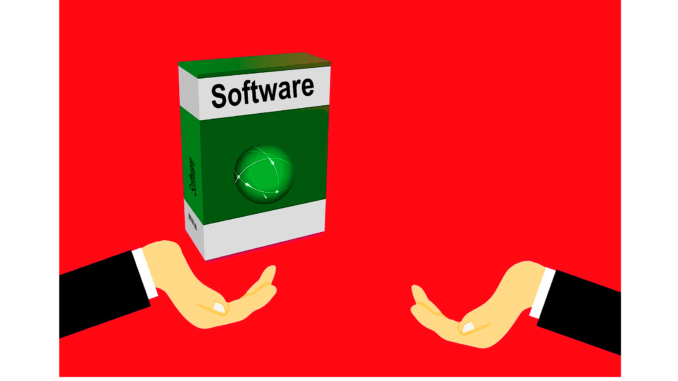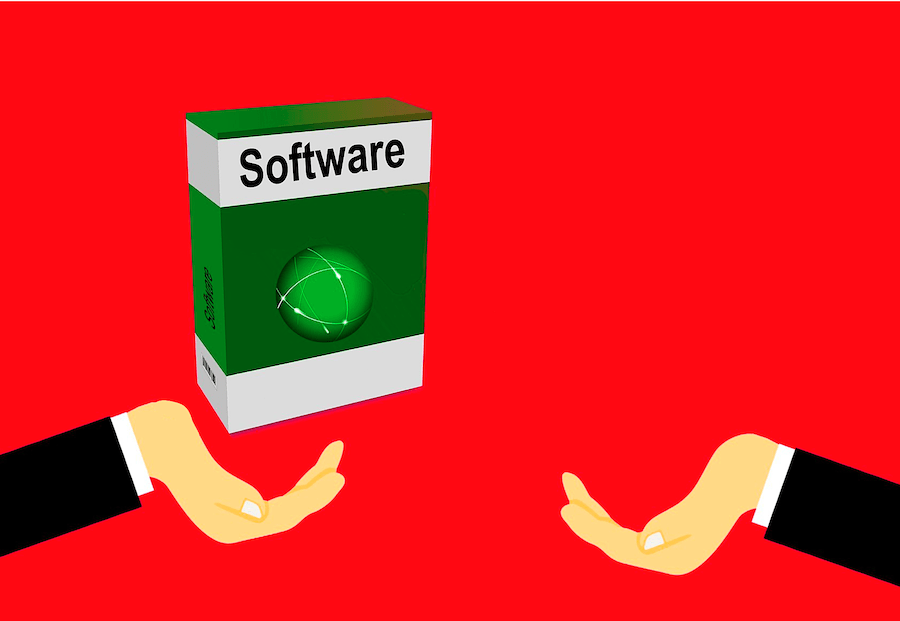
A growing number of law firms are developing legal tech solutions, not for their lawyers, but for their clients to use directly. Will most commercial law firms eventually do this, whether the tech is homemade, off-the-shelf, or a mix of the two? And if they do, how far will they take it and what will they make? Artificial Lawyer explores.
Client-Facing Legal Tech Models
There are plenty of scenarios where a law firm may design and build a piece of software only for its own exclusive use, but what we’re looking at here is when it’s meant primarily for the clients to leverage to meet their needs. Here are some models that law firms use:
- Self-Serve Expert Systems – this is probably the most popular scenario, often built upon no-code software and usually working as a Q&A ‘expert system’. For example, Allen & Overy was an early developer of this approach with AOSphere, which provides a subscription-based suite of expert systems that provide detailed responses to financial markets queries. Many others have followed, from very simple applications to the highly complex, and where some are free, while others also are sold via a subscription. Today firms use them to cover everything from data privacy to ESG compliance needs their clients may have and want to do some of the work on their own using an automated system that the law firm serves up to them. Although, one thing is for sure however, if you give legal info to clients in this automated way the tool has to be maintained and regularly updated, it’s not a ‘fire and forget’ kind of approach.
- Self-Serve Document Production – we have also seen (and there is often a strong cross-over with the above) a client-facing offering to help them produce legal documents. These can be free services that are aimed at smaller companies that may one day become major clients, as well as standardised contracts for a firm’s mainstream clients. Naturally, if things are being given away for free the firm doesn’t want to cannibalise its own income, so these tend to be a form of sophisticated marketing to draw in the demand for more complex advice later on. Wilson Sonsini in the US is a good example of a firm taking this approach, especially for the high-growth community of companies who may one day become tech giants.
- Tech Intermediary / Product Customizer – this is where the law firm brings in a third-party tool, or several tools together, perhaps refines things and adds in connectors and additional workflows, then markets this to the clients as a product offering. It can also sometimes help for a firm to have its own legal ops / tech consulting group to enable the implementation. TLT’s new Concierge contracting and workflow platform, which includes a combination of LegalSifter, HighQ, Contract Express, as well as Clarilis, plus some of their own ‘custom tooling’, is a good example.
- Custom Built Products Using Open Kits – a variation on this theme is a group such as Simmons & Simmons Wavelength that will build specific applications to meet a one-off client demand, often making use of widely available software suites such as Microsoft’s huge and multi-faceted platform to do so. This may also come with additional consulting services and adjoining legal input as well.
- Law Firm-Made Major Products – this is the most committed of all approaches and it’s when a law firm builds its own tool(s) without heavily relying on a third-party supplier to provide the core of the offering. These tend to be heavy-weight tools with plenty of developer time involved and a team of product owners who are maintaining and improving the product(s) over the long-term just as a legal tech vendor would. They also usually come out of dedicated legal tech groups inside or connected to law firms. Examples are Gravity Stack out of Reed Smith, CreateiQ out of Linklaters, and Kennedys IQ out of Kennedys the insurance-focused law firm. These types of approaches in particular are often run as commercial enterprises and don’t usually take a freemium approach. (One additional point here – and a hat-tip to Shawn Curran at Travers Smith – is that if you are writing your own code for an entirely new product then this also comes with additional security demands to make sure it meets requirements, while such checks can be less comprehensive if you’re working with already tried and tested products that are in the market.)
- The Consortium-Made Major Product – one other approach, which is both rare and hard to achieve, is when a group of law firms get together to fund and build a major legal tech product that they all believe in. One of the only cases we’ve seen is Lupl (which was created by CMS, Cooley and Rajah & Tann), and has resulted in an entirely separate business launching. It’s also for the use by other law firms, not just clients.
There are other ways of doing things, e.g. open-sourcing a piece of software for all to use whether law firms or clients, and some of the above can blend together, but that’s an overview of much of what we see today. And there are of course plenty of other ways that law firms can get involved in legal tech that their clients may use, from running incubators to investing in legal tech companies, but those are not really the same thing as deliberately building or ‘putting together’ a tool for client use and then presenting it to them.
As explored below, all of these approaches raise questions, such as: should the team that builds them / manages the products also be part of the core innovation team, or part of a new unit, and should that unit be spun off as a separate entity? Plus, how far should these approaches go, i.e. if they are revenue generating how much would a law firm want them to be part of the business’s income stream? And how do you balance the desire for the tech to provide marketing benefits vs just additional income (if any income is even to be made)?

TLT – A Case Study
Let’s take an example: TLT. It’s a law firm that started off as a regional business in the UK, but has now grown into a large firm with over 1,400 people and multiple offices. It was an early adopter of legal tech tools that changed how lawyers worked and partnered with NLP-driven contract review company LegalSifter to provide a service directly to their clients some years ago.
As noted above, they’ve put together ‘Concierge’, which combines several companies’ software, plus some of their own tooling. The firm’s FutureLaw team, headed by James Touzel, developed this and consultants in the group are now helping clients to implement it.
One could say this does several things:
- It could generate direct licence revenue for the firm.
- It could generate consulting revenue.
- Clients are made more sticky because of this tool (if they bring it in).
- There is a halo of goodwill that comes from the firm helping the clients in this way, which may then result in additional legal work.
- The law firm also gets to know much more about the client.
Artificial Lawyer put a few questions to Touzel about this. First, what value does a law firm bring by doing this? Can’t an inhouse team just do this by itself?
‘The secret sauce is the bringing together of the applications that we know well. However, it’s not just tech, but how we configured it and built the user journey,’ he explained.
‘We have evaluated 100 pieces of legal tech over the last 12 months,’ he added, ‘and most clients don’t have the time to do this. Also, we do what’s best for the client. For example, for one client the consulting team worked with they recommended the company just do more with SharePoint, which they had already. If they don’t need it [our product], we tell them that.’
So, the key point here is that if you are a law firm selling tech to a client, then it’s got to be a really, really transparent process. The client cannot feel for a moment that there could be a better plan that you are not telling them about.
But why do this? Even if this generates some revenue and perhaps creates ‘halo’ benefits, why should a law firm get involved in selling tech and the associated consulting that comes with it?
‘Legal services for a long time were just the law, but now we know the clients need that advice [on legal tech]. Things are changing. GCs are also being asked to contribute more value to the business and have to transform the legal department,’ Touzel noted.
I.e. They do this because the clients are asking for it and need it.
Last point: how to structure this? Touzel explained that TLT’s FutureLaw group is fully part of the firm. They looked at different structures but decided it should not be spun out. Moreover, he doesn’t think this kind of offering would work well if it was very distant from the law firm.
‘If we did this on our own, we’d not have a view of what the clients want,’ Touzel concluded.
Inside the firm they can gather experience from years working with similar clients. They can also go and see a client with a joined-up offering, rather than a lawyer go to a meeting with a client and then say they have a spun-off tech provider and consulting group that the client can perhaps be referred to later on. This way, it’s all one package – if the client wants it.
That’s just one example and helps to explain ‘the why?’. It also connects to several key issues explored below.
Do You Need A Separate Team?
Should law firms create a special and separate team for this kind of work? A reason in favour is that it isn’t a standard internal innovation team job, i.e. it’s building for clients. But one could argue that there is plenty of cross-over and firms should tap all the talent they have, not create gaps between teams.
Yet some may argue that you need a separate business unit, not just for governance reasons, but because it’s generating an income and so you need a separate accounting system and a new set of KPIs. Mixing this up with the rest of the firm could perhaps confuse things.
Another ‘pro’ reason is that if you create a new company to do this then the people in it can be rewarded differently to the rest of the law firm. And one last reason is there can also be regulatory barriers in some countries that may make an ‘at arm’s length’ separate entity easier to operate.
The answer is that there is no right answer here and much depends on firm culture as much as anything else. For now, both in and out seem to work.
How Far Do You Want to Go?
How far do you take this? A firm that has one small expert system on its website that makes no revenue and which needs only basic upkeep may say that it’s just a side project for its innovation team and it’s never going to be more than that. Because the goals are small the longer-term view also remains limited. But then, if you invest very little you are not going to gain a great deal either.
Meanwhile, a firm that has significantly bankrolled a homemade major product and staffed it up with senior people, may well ask: how big is enough? How much money should it make? How widely do we want to sell? Should we make a whole range of products? How far does this product exist to create a ‘goodwill halo’ and produce ‘stickiness’, and how far are we trying to make money from selling software that clients genuinely are looking for help with – where do you draw the line between making money and marketing?
At present, it doesn’t look like any law firm is making more than a very small fraction of its total revenue from such projects. But then when you add in consulting fees, additional legal advisory work that stems from this product, maybe it’s actually a notable amount? It’s hard to calculate. And calculating the value of the ‘halo’ effect on marketing is probably impossible.
But, if you did want to expand things, then how far should such projects grow?
The answer again is that it’s still early days. But, it seems likely such groups, even the larger and most bullish of them, will always remain a small part of the total business as it’s there fundamentally to help boost the work of the firm as a whole, not to carve out its own empire. And as noted, perhaps the most valuable part of all of this over the long-term for the firm are the halo of goodwill and the client retention potential – which means that trying to measure things by software revenue is not necessarily a good fit for calculating the benefits.
(Although in the ALSP world such approaches could (and do) become a greater share of total income, given that ALSPs are not always so focused on legal advisory work and there is a strong crossover between things like legal managed services, consulting, and the provision of tech solutions. Elevate for example, provides a range of services as well as selling software that it has built itself.)
Is This For Everyone?
But will all commercial law firms engage with the approaches above? It seems likely that over the longer term, and if we include the smallest offerings such as very narrow and free to use expert systems made just for client use, then the answer is: probably not all, but many more firms will eventually do this in some way one day.
At the smaller end of things, e.g. a no-code based expert system, providing such applications directly to the client base is not expensive – and if the goal is primarily focused on business development and creating more sticky relationships then it’s probably a lot more economical than some of the elaborate strategies law firms invest in today, such as paying for a busload of clients to sit in a VIP box at Wimbledon.
One thing is for sure: the more firms invest here, then the greater likelihood they will get more back. Small bets rarely generate big wins. There are of course bigger risks in bankrolling a major client product strategy, but it also may deliver a much greater benefit to the firm and its clients for many years to come.
By Richard Tromans, Founder, Artificial Lawyer, Sept 2022
–
Legal Innovators UK Conference – London, November 10 + 11
If you found the topics covered in this article of interest then come along to the landmark two-day legal innovation conference in London. Day One: Law Firms and ALSPs, Day Two: Inhouse and Legal Ops. We have a fantastic line-up of speakers from across the legal and legal tech ecosystems for this event focused on learning, sharing and networking. See you there!
Tickets and more information can be found here.
